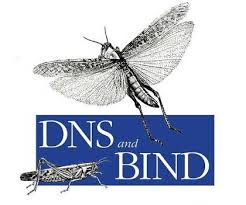The Domain Name System (DNS) is a fundamental component of the internet, translating human-readable domain names into machine-readable IP addresses. BIND (Berkeley Internet Name Domain) is one of the most widely used DNS server implementations, providing reliable and scalable DNS services. This white paper will delve into the intricacies of DNS and BIND, covering essential concepts, configuration, and troubleshooting techniques.
NS and BIND: A Comprehensive Guide
Introduction
The Domain Name System (DNS) is a fundamental component of the internet, translating human-readable domain names into machine-readable IP addresses. BIND (Berkeley Internet Name Domain) is one of the most widely used DNS server implementations, providing reliable and scalable DNS services. This white paper will delve into the intricacies of DNS and BIND, covering essential concepts, configuration, and troubleshooting techniques.
Understanding DNS
Core Components:
- Domain Names: Hierarchical names that identify resources on the internet (e.g., www.example.com).
- DNS Servers: Computers that store and serve DNS records.
- DNS Records: Data structures that map domain names to IP addresses or other information.
- A Records: Map domain names to IPv4 addresses.
- AAAA Records: Map domain names to IPv6 addresses.
- CNAME Records: Create aliases1 for domain names.
- MX Records: Specify mail exchange servers.
- NS Records: Specify authoritative name servers.
- TXT Records: Store arbitrary text information.
DNS Resolution Process:
- Recursive Query: A client queries a local DNS resolver.
- Iterative Query: The resolver queries a root name server, then a top-level domain (TLD) name server, and finally an authoritative name server for the domain.
- Response: The authoritative name server returns the requested DNS record to the resolver, which then returns it to the client.
BIND: A Comprehensive DNS Server
Key Features:
- Flexibility: Supports various DNS protocols and features.
- Scalability: Handles large-scale DNS deployments.
- Security: Implements robust security measures.
- Performance: Optimizes DNS query processing.
BIND Configuration:
Named.conf:
- Options Block: Defines global options like logging level, statistics, and security settings.
- Controls Block: Specifies control channel settings for remote administration.
- Logging Block: Configures logging options.
- Server Block: Defines server-specific settings like listen addresses and statistics.
- Zone Sections: Define DNS zones, including authoritative and slave zones.
Zone Files:
- Contain DNS records for a specific domain.
- Example:$TTL 86400 @ IN SOA ns1.example.com. admin.example.com. ( 2023102701 ; serial 3600 ; refresh 600 ; retry 1209600 ; expire 86400 ) ; minimum www IN A 192.0.2.1
BIND Security:
- Access Control Lists (ACLs): Restrict access to specific IP addresses or networks.
- TSIG: Authenticates updates to DNS zones.
- DNSSEC: Provides cryptographic signatures for DNS records.
Troubleshooting DNS Issues:
- Check DNS Records: Ensure correct configuration of DNS records.
- Verify Network Connectivity: Test connectivity to DNS servers.
- Inspect DNS Logs: Analyze logs for error messages.
- Use Diagnostic Tools: Employ tools like dig and nslookup to diagnose DNS issues.
- Monitor DNS Performance: Use tools like BIND's statistics to track performance metrics.
Advanced Topics
- DNS Load Balancing: Distribute DNS traffic across multiple servers.
- DNS Anycast: Deploy DNS servers in multiple locations to improve response times.
- DNS Caching: Reduce DNS query load and improve performance.
- DNS Security Extensions (DNSSEC): Enhance DNS security.
Conclusion
DNS and BIND play a critical role in the internet's infrastructure. By understanding the core concepts, configuration, and troubleshooting techniques, you can effectively manage and secure DNS services. By implementing best practices and staying updated with the latest advancements, you can ensure the reliability and performance of your DNS infrastructure.
References:
- BIND Documentation: https://bind9.readthedocs.io/
- RFC Documents: https://www.rfc-editor.org/
- O'Reilly's DNS and BIND: https://www.amazon.com/DNS-BIND-5th-Cricket-Liu/dp/0596100574
